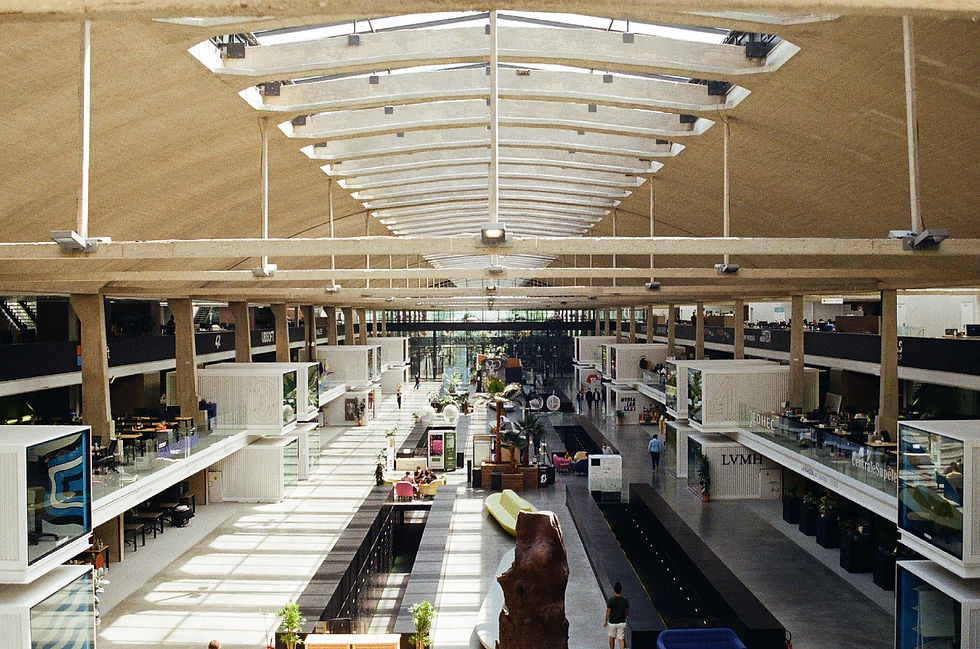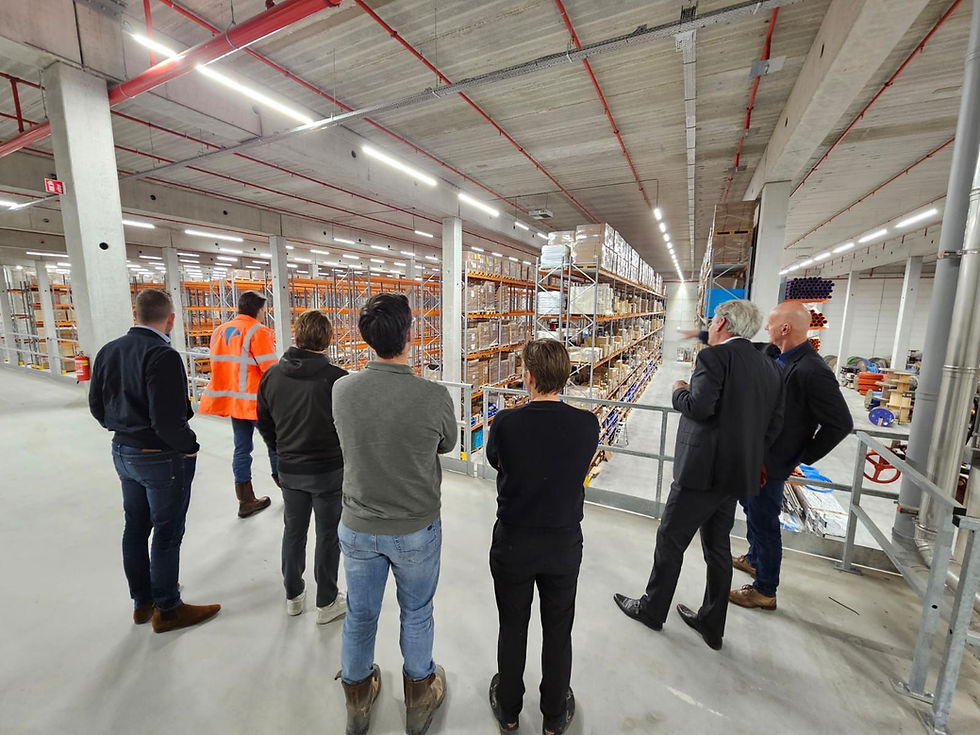A Prediction: Construction Logistics in 10 Years…
- news and press

- 7 days ago
- 4 min read
A Prediction: Construction Logistics in 10 Years…"
Published in the Magazine BouwTotaal, published on March 28 by Qonnected Logistics:
The “construction” sector (renovation, installation, maintenance, civil engineering) is one of the last industries where logistics has not been viewed as an integral cost of creating an art or construction project. But there is a clear trend emerging in the future of construction logistics—driven not least by new regulations on circularity, emission-free zones, and congestion on (city center) roads.
This article was written by our knowledge partner Qonnected Logistics, experts in advanced logistics chain platforms.
When we ask a construction company what percentage of their project costs (foundation costs) consist of logistics—just the transportation costs—they usually don't know or assume it's just a few percent. The real answer? On average: 15%.
If we ask a construction company whether their own equipment is fully utilized—in other words, whether the investment is being fully used—the answer is even more unclear. Few companies invest with optimal usage in mind.
And when asked how they plan to meet future requirements for CO₂, circularity, and other reports, the answer is almost always, "We’ll figure it out when the time comes," with some positive exceptions.
The Three Phases of Change
1. Smarter Use of Existing Methods
Bundling transportation flows is not only smart and cost-reducing—it’s also crucial for keeping up with demand.
We’re already seeing the first changes, and they can be implemented now. If we describe construction logistics as a flow of materials (of all kinds, from piles to power outlets) from manufacturer to construction site, sometimes with stops at wholesalers or retailers, then we find that the average vehicle load is only 60% and almost always returns empty… That’s a transport efficiency of just over 30%—with all the related traffic and CO₂ emissions.
Just for the extra housing that the Netherlands plans to build by 2030, 166 million extra truck trips are needed. The country doesn't have the transport capacity, let alone that these trips would be emission-free. Production capacity of electric trucks is nowhere near sufficient, and there’s a shortage of drivers—by 2020, Europe was already 135,000 drivers short.
Use of Construction Hubs (Bouwhubs)
Bouwhubs are crucial to the construction logistics process for several reasons. They can reduce city transport (which accounts for 30% of all logistics traffic) by 73%, and the remaining traffic can be made emission-free. Logistics costs are also reduced—suppliers only need to deliver full trucks to one location: the Bouwhub. This cuts costs by 40%.
In the future, Bouwhubs will also handle construction waste from the city and provide return freight options.
There is already a platform—Qonnected Logistics—that bundles transportation flows and integrates Bouwhubs in the logistics process. Thanks to its overview, the platform also supports CO₂ and circularity reporting.
2. Organic Change
As the above changes gradually take place:
Suppliers will start relocating stock in the most logistically efficient way.
Bouwhubs will hold forward-positioned inventories of many construction materials.
Initially focused on inner-city deliveries, Bouwhubs will also begin to serve regional deliveries, becoming logistical centers for suppliers, manufacturers, and wholesalers.
A Bouwhub is purely a logistics hub—not a buyer or seller.
Using AI, construction material flows can already be predicted—allowing for early production and inventory planning.
Transporters (nearly 4,000 in the Netherlands) will get most of their trips automatically in their Transport Management Systems (TMS), aiming for 100% load capacity. This leads to better profitability and lower prices per pallet/kg/m² for shippers, using fewer trucks and drivers. Smart transporters are setting up operations at Bouwhubs.
Qonnected Logistics plans to build 14 Bouwhubs over the next five years:
6 hubs of 60,000 m²
4 hubs of 30,000 m²
4 hubs of 20,000 m²Totaling 560,000 m² with an investment of over €500 million.
3. And Then…
Once the previous phase is in full swing, the next logical step for construction companies is to outsource their logistics.
Outsourcing to a party that has full oversight of available materials, vehicles, pricing, and equipment is always more efficient and cheaper than a single construction company handling it internally—even for large firms.
Construction companies can then focus on their core task: building, and leave logistics to the professionals.
Costs will drop by at least 5%
Risk is reduced to almost zero
EBIT (earnings before interest and taxes) will rise by at least 5%
Qonnected Logistics is a Managed Logistics Provider. They acquire logistics departments, including equipment, vehicles, stock, and personnel—and deliver the service back at at least 5% lower cost.
Conclusion
This is an overview of the upcoming changes in construction logistics. Of course, there are countless variations and specific adjustments possible—this is just the "big picture."
But the construction industry might be the last to go through this predictable and unavoidable transformation. After all, wasn’t Amazon (or bol.com) just a platform for books and CDs 10 years ago? Now they’re a full outlet for all retailers—handling payments, logistics, storage, and price comparisons. And even selling products themselves…
Let me know if you’d like this in a downloadable document or want a summary of key actions for a construction firm.



Comments